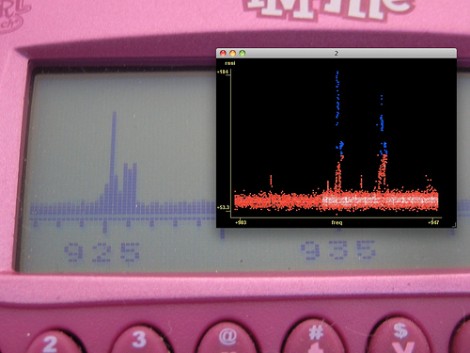We’ve seen these little toys called “sugar cubes” by GirlTech around for a while now. They are a toy block, with an LCD on the front and they respond to movement, button presses and they interact with each other if you stack them up. We’re just as curious as anyone else about their internals, but maybe not quite curious enough to rush out and buy one. Luckily, we don’t have to as [Joby] has done it for us and documented what he found. While it may be lacking in extreme detail, at least our curiosity is somewhat satiated.
We can see that it has a 16×16 LCD, an unknown chip hidden under an epoxy blob as usual. To determine what character is shown, you can bridge one of 4 spots on the PCB, though he has only managed to switch to a little ninja and a question mark. Does anyone have any brilliant ideas on a project for these?
girltech2 Articles
Pulling Data From The IM-ME Spectrum Analyzer
A small, cheap spectrum analyzer with an LCD can be a fun thing to play with. But to be truly usefully you need access to raw data, and lots of it. [Travis Goodspeed] set out to make that possible by pulling data with a GoodFET and a Python script.
He started with [Michael Ossmann’s] IM-ME spectrum analyzer, which uses a CC1110 chip. The two of them are giving a lecture at Toorcon 12 (called Real Men Carry Pink Pagers) and this will be used as a demonstration device. After studying the datasheet he found the starting RAM address and did some further work to deciphered how the data is stored in it. From there it was a matter of working out the timing for grabbing the data, and coding a method for storing it. Now he’s looking for brave souls to help him trailblaze with this newly-discovered tool. It seems that if you know what you are doing, and have abundant patience, you can use this for a bit of old-fashioned reverse engineering.












